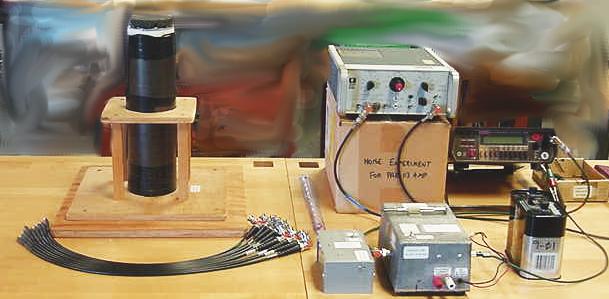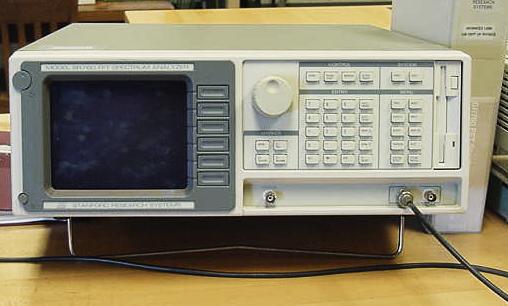Fundamental Constants from Noise Measurements


Students are introduced to the concept that noise is an intrinsic and fundamental characteristic of electronic components and circuits. As such it can be turned from the traditional bane of the experimentalist into a useful tool. The Johnson noise across a resistor is amplified and measured at both room temperature and liquid nitrogen temperature for a series of different resistances. From these measurements students are able to subtract out the amplifier contribution to the measured noise and then determine the dependence of the Johnson noise voltage on the value of the resistance. From the measurements, they can calculate Boltzmann's constant k. For the shot noise measurements a series of different currents are passed through a vacuum diode and the shot noise across the diode is measured at each current. Since the current is carried by electron-size charges, the shot noise measurements contain information about the magnitude of the elementary charge e. Students make the measurements with a Fourier transform spectrum analyzer, and therby see directly that the spectra of Johnson noise and shot noise are white. Optionally, students can use the analyzer to study other kinds of noise (like 1/f ) and the spectral content of various waveforms.
Experiment information
- Write-up
- SRS SR760 FFT Spectrum Analyzer Manual (large)
- Data sheet on the SR760 FFT Spectrum Analyzer
Discussion Questions
- Describe what would happen to the raw measurements and the final calculated
results if the following changes were made to the settings, apparatus or conditions. For each
case, assume that all other aspects of the experiment are the same as before.
Johnson noise:- The temperature drops by 10 C degrees between the time you measure the 40K resistor and the 1k resistor.
- The gain of the amplifier is changed from 10,000 to 5000.
- The noise figure of the amplifier is increased by 10 dB
- The band analysis measurement is set to measure a 10 Hz band rather than a 1000 Hz band.
- The band center is set to 1 kHz rather than 10 kHz.
- The anode resistor is changed to 100kΩ.
- The high-voltage bias on the diode is changed to 150 volts rather than 67 volts.
- In the simplified shot noise circuit diagram, what is the purpose of the capacitor in series
with the "Shot noise output"? What would (or might) happen if it were
removed?
Background Information
- Milotti, Edoardo, "1/f noise: a pedagogical review" (2002).
- Nyquist, H., "Thermal agitation of electric charge in conductors", Phys. Rev. 32, 110-113 (1928).
- Johnson, J. B., "Thermal agitation of electricity in conductors", Phys. Rev., 32, 97--109 (1928).
- Kittel, P., W. R. Hackleman, and R. J. Donnelly, ``Undergraduate experiment on noise thermometry'', Am. J. Phys., 46, 94-100 (1978).
- Spiegel, D. R. and R. J. Helmer, ``Shot noise measurements of the electron charge: an undergraduate experiment'', Am. J. Phys., 63, 554--560 (1995).
- "Shot and thermal noise", Harvard University Physics Department instructions for a similar experiment.
- "Johnson noise and shot noise: The determination of the Boltzmann constant, absolute zero temperature and the charge of the electron", MIT Department of Physics instructions for a similar experiment. Contains a careful derivation of the shot noise equation.